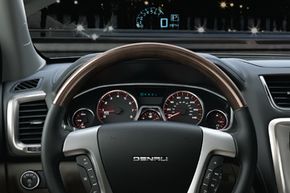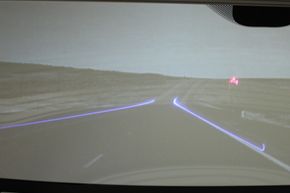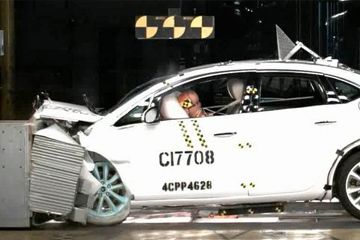Fighter jets have used a rudimentary HUD system since the 1950s to display altitude, speed and even targeting systems on the front of the cockpit canopy. So if you grew up playing fighter jet video games, you know what we're talking about. Driving is about to get a lot more fun.
So what exactly is a heads-up display? It's best to think of your windshield as a transparent screen for information. Instead of taking your eyes off the road to see your speed, navigation directions or other info, the HUD system projects the information at eye level onto the windshield. No more glancing down and away at a small GPS screen. It's all right in front of you.
The tech for HUD varies on the system. Some cars use transparent phosphors on the windshield that reacts when a laser shines on it. When the laser is off, you don't see anything, but when the light is on the information is projected on the glass. Others use a similar system but incorporate mirrors to project the images on the windshield.
If you think heads-up displays are only available for high-end vehicles, you're going to be pleasantly surprised. In 2012 Pioneer released an aftermarket head-up display unit that mounts to the top of a car's cabin and can project information on the windshield. The system connects to a smartphone app through Bluetooth wireless technology and displays navigation instructions, points of interest and even road hazards.
So why do we need this, anyway? Well, not only because it's a cool technology to have and use, but also because the information, pictures, symbols and other gadgets we're adding to our vehicles are distracting us from the road. We need a new way to display this information that keeps our eyes up and on the road -- hence, the heads-up display.




